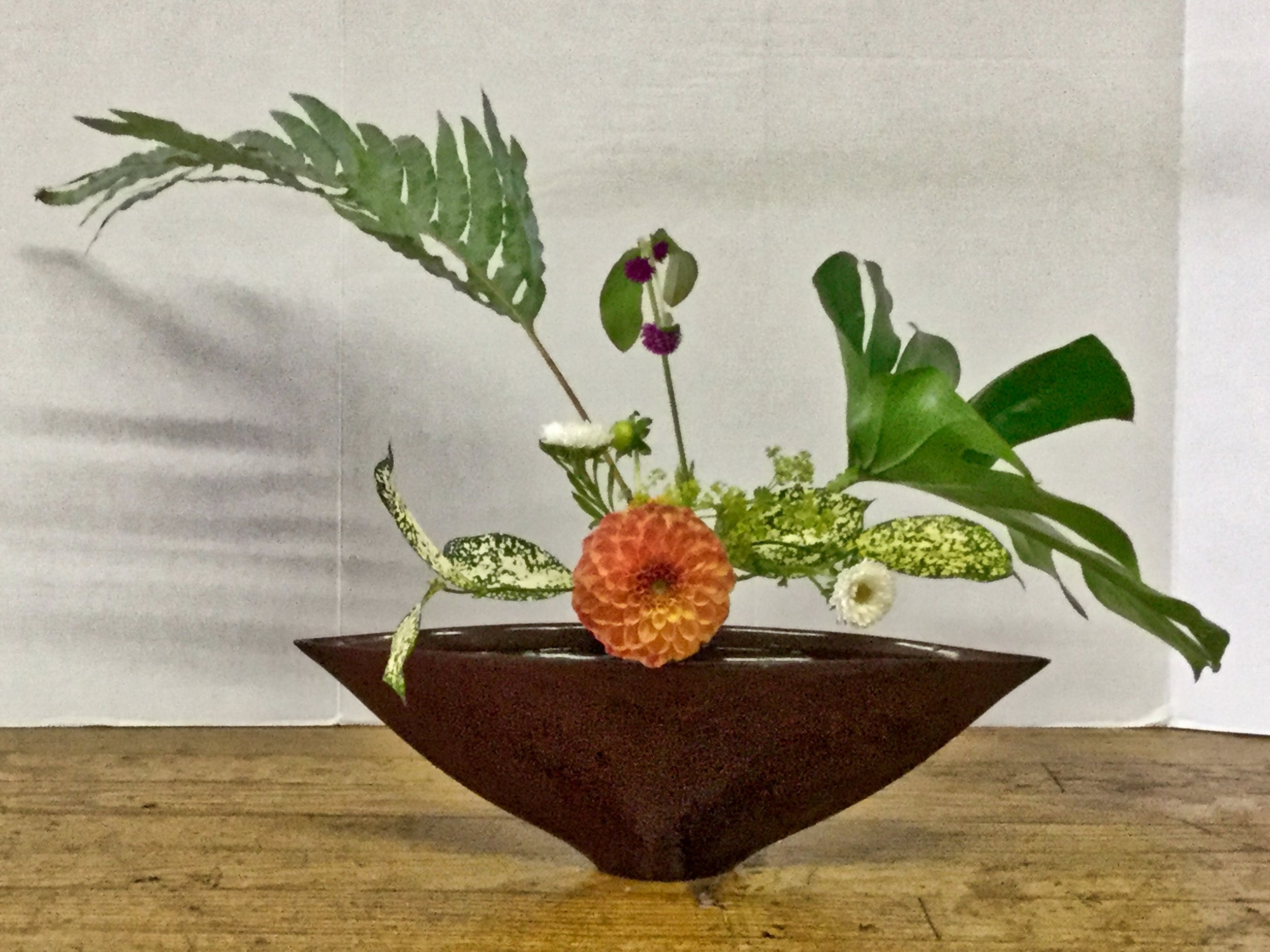The Ikenobo Ikebana Society of Boston was founded in 1966 to promote and disseminate the art of ikebana locally. It is recognized by the Ikenobo School of Floral Art in Kyoto, Japan. We hold monthly ikebana workshops and other ikebana-related activities, and in 2016 celebrated the fiftieth anniversary with a special event.
New to ikebana?
A short primer on ikebana
Welcome! Ikebana is the Japanese traditional art of flower arranging, and a cornerstone of Japanese culture. It has evolved over the last five centuries into a dazzling array of styles for different occasions, seasons, and even species.
If you would like to see what ikebana is all about, browse our galleries, or come to a workshop. You are welcome to observe a workshop led by a local teacher at no cost, or participate for the regular fee ($45-$55, depending on the cost of materials provided). If you have just joined Ikebana International, you may participate in a local teacher workshop by paying only the floral material fee. The workshops led by external and international teachers are heavily over-subscribed so we cannot offer positions in those.
Finding a teacher
The Ikenobo teaching tradition is interactive, with a teacher instructing either a single student or a small group. Classes are often held in either the student's or the teacher’s home. Ikenobo teachers must hold appropriate certification, and often travel to Kyoto to study with master Japanese Ikenobo professors. Several of our members are certified teachers, and lead our monthly workshops. We would be happy to put you in touch with teachers in the Greater Boston area via our contact page.
Chapter officers & Committee Chairs
2025-2026
Deborah Young, President
Martha Volpe, First Vice President, workshop chair
Mimi Santini-Ritt, Treasurer
Ilene Conn, Recording Secretary
Nicki Croghan, Masumi Ichikawa Naylor, Kai-Yin Hsu Nominating Committee
Teresa Silverman, exhibition chair
Patsy Cunningham, webmaster
Ikebana and Ikenobo
Ikebana is the Japanese traditional art of flower arranging, and a cornerstone of Japanese culture. The word is composed of two parts: ike (arrange; enhance), and hana (flower; plant). Ikebana seeks to highlight the essence of plant materials, and thus portray the natural world. It originated as the practice of creating temple offerings in fifteenth century Japan. As these offerings became more stylized, a set of rules emerged to govern their composition, and the Ikenobo school emerged centered on the Rokkakudo Temple in Kyoto.
Ikenobo remains headquartered at the Temple more than 550 years later, with the headmaster serving as head priest. The incumbent, Sen'ei Ikenobo, is the 45th member of the same family to hold the post, and carries on the tradition of daily floral offerings in the temple. Over that time, Ikenobo has expanded its stylistic range from creating floral offerings for Buddhist temples to designing elaborate arrangements for the nobility and, more recently, to smaller creations for contemporary households and public spaces. Along with the newer schools it has engendered, Ikenobo continues to evolve in response to societal needs, new forms of architecture, outside cultural influences and the availability of new species from outside Japan.
A more detailed history of Ikebana and Ikenobo can be found at the School’s website.


